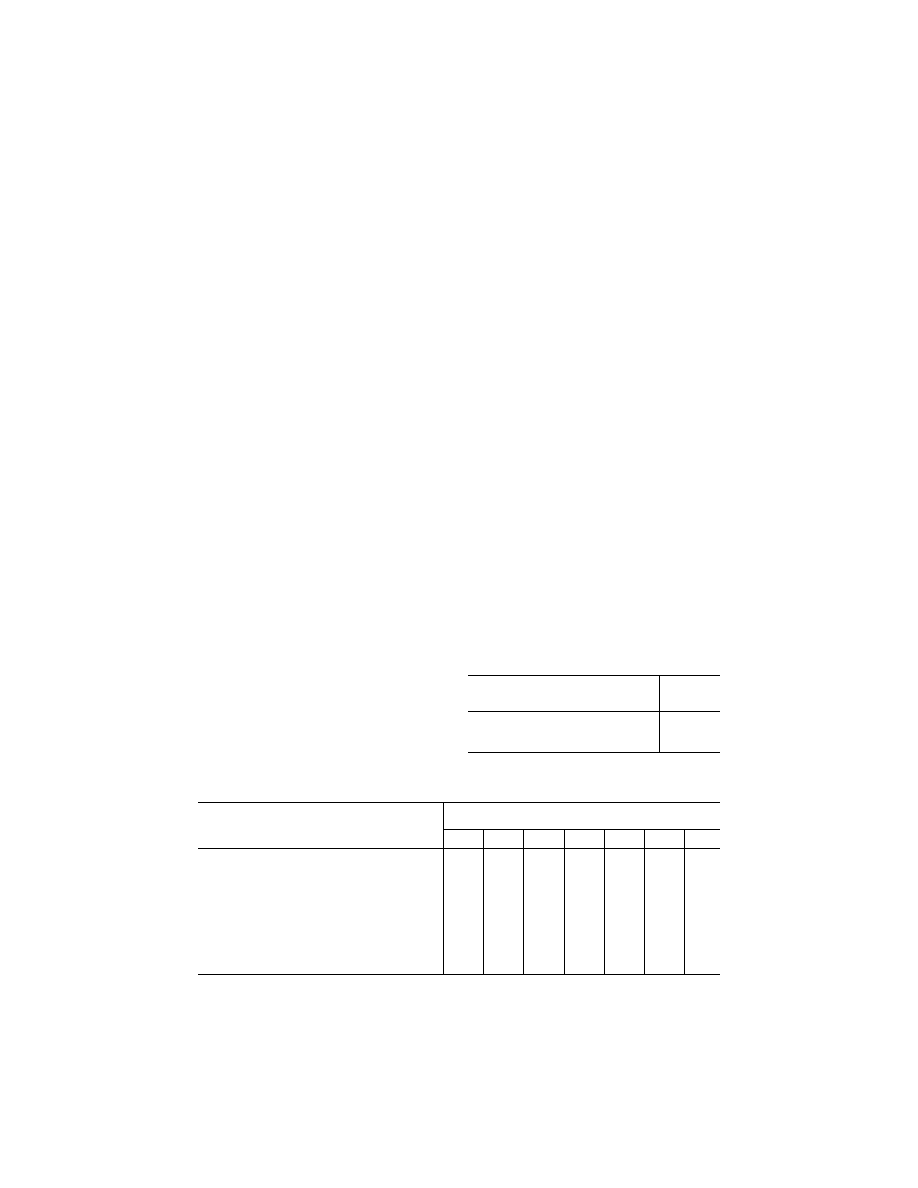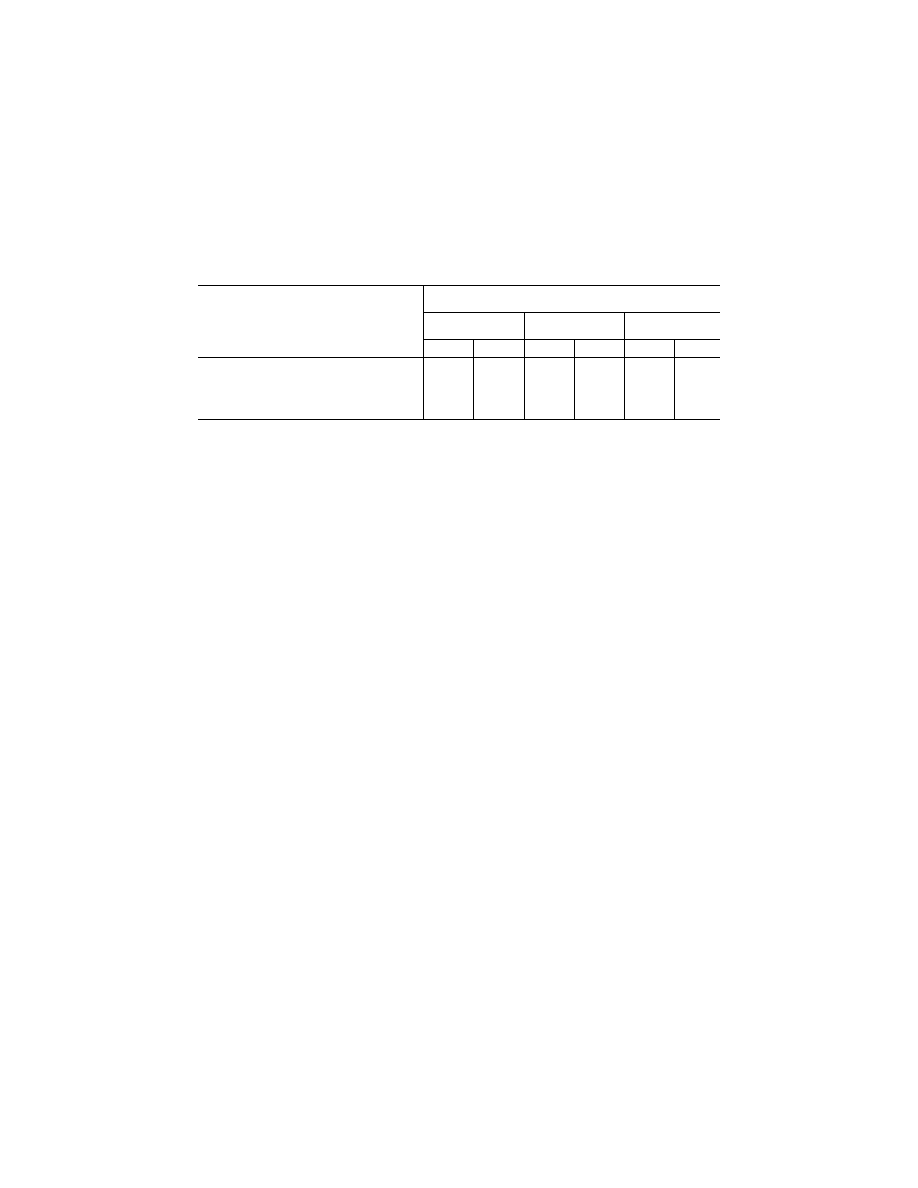
20
14 CFR Ch. I (1–1–24 Edition)
§ 111.310
§ 111.310 Written consent.
(a) Before any operator may access a
pilot’s records in the PRD, that pilot
must apply for access to the PRD in ac-
cordance with § 111.305 and provide
written consent to the FAA for release
of that pilot’s records to the operator,
in a form and manner acceptable to the
Administrator.
(b) Provision of consent must include
an affirmation that the employment
history of the pilot for five years pre-
ceding the date of consent is accurate
and complete. If the pilot finds the em-
ployment history is not complete, the
pilot must update the employment his-
tory to list all past employers.
(c) Before an operator submits a re-
quest to the NDR for an individual’s
motor vehicle driving record for pur-
poses of compliance with § 111.110, the
individual must provide written con-
sent specific to the NDR search.
§ 111.315 Pilot right of review.
(a) Once a pilot has received elec-
tronic access in accordance with
§ 111.305, the pilot may access the PRD
to review all records pertaining to that
pilot.
(b) A pilot who submits written con-
sent to a reviewing entity in accord-
ance with § 111.310(c) may request a
copy of any State motor vehicle driv-
ing records obtained by the reviewing
entity in accordance with § 111.110.
(c) A pilot may review all records
contained in the PRD pertaining to
that pilot, without accessing the PRD
and without obtaining electronic ac-
cess issued in accordance with § 111.305,
upon submission of a form provided by
the Administrator to confirm the pi-
lot’s identity.
§ 111.320 Reporting errors and re-
questing corrections.
A pilot who identifies an error or in-
accuracy in that pilot’s PRD records
must report the error or inaccuracy to
the PRD in a form and manner accept-
able to the Administrator.
PARTS 112–116
[
RESERVED
]
PART 117—FLIGHT AND DUTY LIMI-
TATIONS AND REST REQUIRE-
MENTS: FLIGHTCREW MEMBERS
Sec.
117.1
Applicability.
117.3
Definitions.
117.5
Fitness for duty.
117.7
Fatigue risk management system.
117.9
Fatigue education and awareness
training program.
117.11
Flight time limitation.
117.13
Flight duty period: Unaugmented op-
erations.
117.15
Flight duty period: Split duty.
117.17
Flight duty period: Augmented
flightcrew.
117.19
Flight duty period extensions.
117.21
Reserve status.
117.23
Cumulative limitations.
117.25
Rest period.
117.27
Consecutive nighttime operations.
117.29
Emergency and government spon-
sored operations.
T
ABLE
A
TO
P
ART
117—M
AXIMUM
F
LIGHT
T
IME
L
IMITS FOR
U
NAUGMENTED
O
PERATIONS
T
ABLE
B
TO
P
ART
117—F
LIGHT
D
UTY
P
ERIOD
:
U
NAUGMENTED
O
PERATIONS
T
ABLE
C
TO
P
ART
117—F
LIGHT
D
UTY
P
ERIOD
:
A
UGMENTED
O
PERATIONS
A
UTHORITY
: 49 U.S.C. 106(g), 40113, 40119,
44101, 44701–44702, 44705, 44709–44711, 44713,
44716–44717, 44722, 46901, 44903–44904, 44912,
46105.
S
OURCE
: Docket No. FAA–2009–1093, 77 FR
398, Jan. 4, 2012, unless otherwise noted.
§ 117.1 Applicability.
(a) This part prescribes flight and
duty limitations and rest requirements
for all flightcrew members and certifi-
cate holders conducting passenger op-
erations under part 121 of this chapter.
(b) This part applies to all operations
directed by part 121 certificate holders
under part 91, other than subpart K, of
this chapter if any segment is con-
ducted as a domestic passenger, flag
passenger, or supplemental passenger
operation.
(c) This part applies to all flightcrew
members when participating in an op-
eration under part 91, other than sub-
part K of this chapter, on behalf of the
part 121 certificate holder if any flight
segment is conducted as a domestic
passenger, flag passenger, or supple-
mental passenger operation
(d) Notwithstanding paragraphs (a),
(b) and (c) of this section, a certificate
holder may conduct under part 117 its

21
Federal Aviation Administration, DOT
§ 117.3
part 121 operations pursuant to 121.470,
121.480, or 121.500.
§ 117.3 Definitions.
In addition to the definitions in §§ 1.1
and 110.2 of this chapter, the following
definitions apply to this part. In the
event there is a conflict in definitions,
the definitions in this part control for
purposes of the flight and duty limita-
tions and rest requirements of this
part.
Acclimated
means a condition in
which a flightcrew member has been in
a theater for 72 hours or has been given
at least 36 consecutive hours free from
duty.
Airport/standby reserve
means a de-
fined duty period during which a
flightcrew member is required by a cer-
tificate holder to be at an airport for a
possible assignment.
Augmented flightcrew
means a
flightcrew that has more than the min-
imum number of flightcrew members
required by the airplane type certifi-
cate to operate the aircraft to allow a
flightcrew member to be replaced by
another qualified flightcrew member
for in-flight rest.
Calendar day
means a 24-hour period
from 0000 through 2359 using Coordi-
nated Universal Time or local time.
Certificate holder
means a person who
holds or is required to hold an air car-
rier certificate or operating certificate
issued under part 119 of this chapter.
Deadhead transportation
means trans-
portation of a flightcrew member as a
passenger or non-operating flightcrew
member, by any mode of transpor-
tation, as required by a certificate
holder, excluding transportation to or
from a suitable accommodation. All
time spent in deadhead transportation
is duty and is not rest. For purposes of
determining the maximum flight duty
period in Table B of this part, deadhead
transportation is not considered a
flight segment.
Duty
means any task that a
flightcrew member performs as re-
quired by the certificate holder, includ-
ing but not limited to flight duty pe-
riod, flight duty, pre- and post-flight
duties, administrative work, training,
deadhead transportation, aircraft posi-
tioning on the ground, aircraft loading,
and aircraft servicing.
Fatigue
means a physiological state
of reduced mental or physical perform-
ance capability resulting from lack of
sleep or increased physical activity
that can reduce a flightcrew member’s
alertness and ability to safely operate
an aircraft or perform safety-related
duties.
Fatigue risk management system
(FRMS) means a management system
for a certificate holder to use to miti-
gate the effects of fatigue in its par-
ticular operations. It is a data-driven
process and a systematic method used
to continuously monitor and manage
safety risks associated with fatigue-re-
lated error.
Fit for duty
means physiologically
and mentally prepared and capable of
performing assigned duties at the high-
est degree of safety.
Flight duty period (FDP)
means a pe-
riod that begins when a flightcrew
member is required to report for duty
with the intention of conducting a
flight, a series of flights, or positioning
or ferrying flights, and ends when the
aircraft is parked after the last flight
and there is no intention for further
aircraft movement by the same
flightcrew member. A flight duty pe-
riod includes the duties performed by
the flightcrew member on behalf of the
certificate holder that occur before a
flight segment or between flight seg-
ments without a required intervening
rest period. Examples of tasks that are
part of the flight duty period include
deadhead transportation, training con-
ducted in an aircraft or flight simu-
lator, and airport/standby reserve, if
the above tasks occur before a flight
segment or between flight segments
without an intervening required rest
period.
Home base
means the location des-
ignated by a certificate holder where a
flightcrew member normally begins
and ends his or her duty periods.
Lineholder
means a flightcrew mem-
ber who has an assigned flight duty pe-
riod and is not acting as a reserve
flightcrew member.
Long-call reserve
means that, prior to
beginning the rest period required by
§ 117.25, the flightcrew member is noti-
fied by the certificate holder to report
for a flight duty period following the
completion of the rest period.

22
14 CFR Ch. I (1–1–24 Edition)
§ 117.5
Physiological night’s rest
means 10
hours of rest that encompasses the
hours of 0100 and 0700 at the flightcrew
member’s home base, unless the indi-
vidual has acclimated to a different
theater. If the flightcrew member has
acclimated to a different theater, the
rest must encompass the hours of 0100
and 0700 at the acclimated location.
Report time
means the time that the
certificate holder requires a flightcrew
member to report for an assignment.
Reserve availability period
means a
duty period during which a certificate
holder requires a flightcrew member on
short call reserve to be available to re-
ceive an assignment for a flight duty
period.
Reserve flightcrew member
means a
flightcrew member who a certificate
holder requires to be available to re-
ceive an assignment for duty.
Rest facility
means a bunk or seat ac-
commodation installed in an aircraft
that provides a flightcrew member
with a sleep opportunity.
(1)
Class 1 rest facility
means a bunk
or other surface that allows for a flat
sleeping position and is located sepa-
rate from both the flight deck and pas-
senger cabin in an area that is tem-
perature-controlled, allows the
flightcrew member to control light,
and provides isolation from noise and
disturbance.
(2)
Class 2 rest facility
means a seat in
an aircraft cabin that allows for a flat
or near flat sleeping position; is sepa-
rated from passengers by a minimum of
a curtain to provide darkness and some
sound mitigation; and is reasonably
free from disturbance by passengers or
flightcrew members.
(3)
Class 3 rest facility
means a seat in
an aircraft cabin or flight deck that re-
clines at least 40 degrees and provides
leg and foot support.
Rest period
means a continuous period
determined prospectively during which
the flightcrew member is free from all
restraint by the certificate holder, in-
cluding freedom from present responsi-
bility for work should the occasion
arise.
Scheduled
means to appoint, assign,
or designate for a fixed time.
Short-call reserve
means a period of
time in which a flightcrew member is
assigned to a reserve availability pe-
riod.
Split duty
means a flight duty period
that has a scheduled break in duty that
is less than a required rest period.
Suitable accommodation
means a tem-
perature-controlled facility with sound
mitigation and the ability to control
light that provides a flightcrew mem-
ber with the ability to sleep either in a
bed, bunk or in a chair that allows for
flat or near flat sleeping position. Suit-
able accommodation only applies to
ground facilities and does not apply to
aircraft onboard rest facilities.
Theater
means a geographical area in
which the distance between the
flightcrew member’s flight duty period
departure point and arrival point dif-
fers by no more than 60 degrees lon-
gitude.
Unforeseen operational circumstance
means an unplanned event of insuffi-
cient duration to allow for adjustments
to schedules, including unforecast
weather, equipment malfunction, or air
traffic delay that is not reasonably ex-
pected.
Window of circadian low
means a pe-
riod of maximum sleepiness that oc-
curs between 0200 and 0559 during a
physiological night.
[Doc. No. FAA–2009–1093, 77 FR 398, Jan. 4,
2012; Amdt. 117–1A, 77 FR 28764, May 16, 2012;
Amdt. 117–1, 78 FR 69288, Nov. 19, 2013]
§ 117.5 Fitness for duty.
(a) Each flightcrew member must re-
port for any flight duty period rested
and prepared to perform his or her as-
signed duties.
(b) No certificate holder may assign
and no flightcrew member may accept
assignment to a flight duty period if
the flightcrew member has reported for
a flight duty period too fatigued to
safely perform his or her assigned du-
ties.
(c) No certificate holder may permit
a flightcrew member to continue a
flight duty period if the flightcrew
member has reported him or herself too
fatigued to continue the assigned flight
duty period.
(d) As part of the dispatch or flight
release, as applicable, each flightcrew
member must affirmatively state he or
she is fit for duty prior to commencing
flight.

23
Federal Aviation Administration, DOT
§ 117.13
§ 117.7 Fatigue risk management sys-
tem.
(a) No certificate holder may exceed
any provision of this part unless ap-
proved by the FAA under a Fatigue
Risk Management System that pro-
vides at least an equivalent level of
safety against fatigue-related acci-
dents or incidents as the other provi-
sions of this part.
(b) The Fatigue Risk Management
System must include:
(1) A fatigue risk management pol-
icy.
(2) An education and awareness train-
ing program.
(3) A fatigue reporting system.
(4) A system for monitoring
flightcrew fatigue.
(5) An incident reporting process.
(6) A performance evaluation.
§ 117.9 Fatigue education and aware-
ness training program.
(a) Each certificate holder must de-
velop and implement an education and
awareness training program, approved
by the Administrator. This program
must provide annual education and
awareness training to all employees of
the certificate holder responsible for
administering the provisions of this
rule including flightcrew members, dis-
patchers, individuals directly involved
in the scheduling of flightcrew mem-
bers, individuals directly involved in
operational control, and any employee
providing direct management oversight
of those areas.
(b) The fatigue education and aware-
ness training program must be de-
signed to increase awareness of:
(1) Fatigue;
(2) The effects of fatigue on pilots;
and
(3) Fatigue countermeasures
(c) (1) Each certificate holder must
update its fatigue education and aware-
ness training program every two years
and submit the update to the Adminis-
trator for review and acceptance.
(2) Not later than 12 months after the
date of submission of the fatigue edu-
cation and awareness training program
required by (c)(1) of this section, the
Administrator shall review and accept
or reject the update. If the Adminis-
trator rejects an update, the Adminis-
trator shall provide suggested modi-
fications for resubmission of the up-
date.
§ 117.11 Flight time limitation.
(a) No certificate holder may sched-
ule and no flightcrew member may ac-
cept an assignment or continue an as-
signed flight duty period if the total
flight time:
(1) Will exceed the limits specified in
Table A of this part if the operation is
conducted with the minimum required
flightcrew.
(2) Will exceed 13 hours if the oper-
ation is conducted with a 3-pilot
flightcrew.
(3) Will exceed 17 hours if the oper-
ation is conducted with a 4-pilot
flightcrew.
(b) If unforeseen operational cir-
cumstances arise after takeoff that are
beyond the certificate holder’s control,
a flightcrew member may exceed the
maximum flight time specified in para-
graph (a) of this section and the cumu-
lative flight time limits in 117.23(b) to
the extent necessary to safely land the
aircraft at the next destination airport
or alternate, as appropriate.
(c) Each certificate holder must re-
port to the Administrator within 10
days any flight time that exceeded the
maximum flight time limits permitted
by this section or § 117.23(b). The report
must contain a description of the ex-
tended flight time limitation and the
circumstances surrounding the need for
the extension.
[Doc. No. FAA–2009–1093, 77 FR 398, Jan. 4,
2012; Amdt. 117–1, 78 FR 8362, Feb. 6, 2013; 78
FR 69288, Nov. 19, 2013]
§ 117.13 Flight duty period: Unaug-
mented operations.
(a) Except as provided for in § 117.15,
no certificate holder may assign and no
flightcrew member may accept an as-
signment for an unaugmented flight
operation if the scheduled flight duty
period will exceed the limits in Table B
of this part.
(b) If the flightcrew member is not
acclimated:
(1) The maximum flight duty period
in Table B of this part is reduced by 30
minutes.

24
14 CFR Ch. I (1–1–24 Edition)
§ 117.15
(2) The applicable flight duty period
is based on the local time at the the-
ater in which the flightcrew member
was last acclimated.
§ 117.15 Flight duty period: Split duty.
For an unaugmented operation only,
if a flightcrew member is provided with
a rest opportunity (an opportunity to
sleep) in a suitable accommodation
during his or her flight duty period, the
time that the flightcrew member
spends in the suitable accommodation
is not part of that flightcrew member’s
flight duty period if all of the following
conditions are met:
(a) The rest opportunity is provided
between the hours of 22:00 and 05:00
local time.
(b) The time spent in the suitable ac-
commodation is at least 3 hours, meas-
ured from the time that the flightcrew
member reaches the suitable accommo-
dation.
(c) The rest opportunity is scheduled
before the beginning of the flight duty
period in which that rest opportunity
is taken.
(d) The rest opportunity that the
flightcrew member is actually provided
may not be less than the rest oppor-
tunity that was scheduled.
(e) The rest opportunity is not pro-
vided until the first segment of the
flight duty period has been completed.
(f) The combined time of the flight
duty period and the rest opportunity
provided in this section does not exceed
14 hours.
§ 117.17 Flight duty period: Augmented
flightcrew.
(a) For flight operations conducted
with an acclimated augmented
flightcrew, no certificate holder may
assign and no flightcrew member may
accept an assignment if the scheduled
flight duty period will exceed the lim-
its specified in Table C of this part.
(b) If the flightcrew member is not
acclimated:
(1) The maximum flight duty period
in Table C of this part is reduced by 30
minutes.
(2) The applicable flight duty period
is based on the local time at the the-
ater in which the flightcrew member
was last acclimated.
(c) No certificate holder may assign
and no flightcrew member may accept
an assignment under this section un-
less during the flight duty period:
(1) Two consecutive hours in the sec-
ond half of the flight duty period are
available for in-flight rest for the pilot
flying the aircraft during landing.
(2) Ninety consecutive minutes are
available for in-flight rest for the pilot
performing monitoring duties during
landing.
(d) No certificate holder may assign
and no flightcrew member may accept
an assignment involving more than
three flight segments under this sec-
tion.
(e) At all times during flight, at least
one flightcrew member qualified in ac-
cordance with § 121.543(b)(3)(i) of this
chapter must be at the flight controls.
§ 117.19 Flight duty period extensions.
(a) For augmented and unaugmented
operations, if unforeseen operational
circumstances arise prior to takeoff:
(1) The pilot in command and the cer-
tificate holder may extend the max-
imum flight duty period permitted in
Tables B or C of this part up to 2 hours.
The pilot in command and the certifi-
cate holder may also extend the max-
imum combined flight duty period and
reserve availability period limits speci-
fied in § 117.21(c)(3) and (4) of this part
up to 2 hours.
(2) An extension in the flight duty pe-
riod under paragraph (a)(1) of this sec-
tion of more than 30 minutes may
occur only once prior to receiving a
rest period described in § 117.25(b).
(3) A flight duty period cannot be ex-
tended under paragraph (a)(1) of this
section if it causes a flightcrew mem-
ber to exceed the cumulative flight
duty period limits specified in 117.23(c).
(4) Each certificate holder must re-
port to the Administrator within 10
days any flight duty period that ex-
ceeded the maximum flight duty period
permitted in Tables B or C of this part
by more than 30 minutes. The report
must contain the following:
(i) A description of the extended
flight duty period and the cir-
cumstances surrounding the need for
the extension; and

25
Federal Aviation Administration, DOT
§ 117.23
(ii) If the circumstances giving rise
to the extension were within the cer-
tificate holder’s control, the corrective
action(s) that the certificate holder in-
tends to take to minimize the need for
future extensions.
(5) Each certificate holder must im-
plement the corrective action(s) re-
ported in paragraph (a)(4) of this sec-
tion within 30 days from the date of the
extended flight duty period.
(b) For augmented and unaugmented
operations, if unforeseen operational
circumstances arise after takeoff:
(1) The pilot in command and the cer-
tificate holder may extend maximum
flight duty periods specified in Tables
B or C of this part to the extent nec-
essary to safely land the aircraft at the
next destination airport or alternate
airport, as appropriate.
(2) An extension of the flight duty pe-
riod under paragraph (b)(1) of this sec-
tion of more than 30 minutes may
occur only once prior to receiving a
rest period described in § 117.25(b).
(3) An extension taken under para-
graph (b) of this section may exceed
the cumulative flight duty period lim-
its specified in 117.23(c).
(4) Each certificate holder must re-
port to the Administrator within 10
days any flight duty period that either
exceeded the cumulative flight duty
periods specified in § 117.23(c), or ex-
ceeded the maximum flight duty period
limits permitted by Tables B or C of
this part by more than 30 minutes. The
report must contain a description of
the circumstances surrounding the af-
fected flight duty period.
[Doc. No. FAA–2009–1093, 77 FR 398, Jan. 4,
2012; Amdt. 117–1A, 77 FR 28764, May 16, 2012;
Amdt. 117–1, 78 FR 8362, Feb. 6, 2013; 78 FR
69288, Nov. 19, 2013]
§ 117.21 Reserve status.
(a) Unless specifically designated as
airport/standby or short-call reserve by
the certificate holder, all reserve is
considered long-call reserve.
(b) Any reserve that meets the defini-
tion of airport/standby reserve must be
designated as airport/standby reserve.
For airport/standby reserve, all time
spent in a reserve status is part of the
flightcrew member’s flight duty period.
(c) For short call reserve,
(1) The reserve availability period
may not exceed 14 hours.
(2) For a flightcrew member who has
completed a reserve availability pe-
riod, no certificate holder may sched-
ule and no flightcrew member may ac-
cept an assignment of a reserve avail-
ability period unless the flightcrew
member receives the required rest in
§ 117.25(e).
(3) For an unaugmented operation,
the total number of hours a flightcrew
member may spend in a flight duty pe-
riod and a reserve availability period
may not exceed the lesser of the max-
imum applicable flight duty period in
Table B of this part plus 4 hours, or 16
hours, as measured from the beginning
of the reserve availability period.
(4) For an augmented operation, the
total number of hours a flightcrew
member may spend in a flight duty pe-
riod and a reserve availability period
may not exceed the flight duty period
in Table C of this part plus 4 hours, as
measured from the beginning of the re-
serve availability period.
(d) For long call reserve, if a certifi-
cate holder contacts a flightcrew mem-
ber to assign him or her to a flight
duty period that will begin before and
operate into the flightcrew member’s
window of circadian low, the flightcrew
member must receive a 12 hour notice
of report time from the certificate
holder.
(e) A certificate holder may shift a
reserve flightcrew member’s reserve
status from long-call to short-call only
if the flightcrew member receives a
rest period as provided in § 117.25(e).
§ 117.23 Cumulative limitations.
(a) The limitations of this section in-
clude all flying by flightcrew members
on behalf of any certificate holder or
91K Program Manager during the appli-
cable periods.
(b) No certificate holder may sched-
ule and no flightcrew member may ac-
cept an assignment if the flightcrew
member’s total flight time will exceed
the following:
(1) 100 hours in any 672 consecutive
hours or
(2) 1,000 hours in any 365 consecutive
calendar day period.

26
14 CFR Ch. I (1–1–24 Edition)
§ 117.25
(c) No certificate holder may sched-
ule and no flightcrew member may ac-
cept an assignment if the flightcrew
member’s total Flight Duty Period will
exceed:
(1) 60 flight duty period hours in any
168 consecutive hours or
(2) 190 flight duty period hours in any
672 consecutive hours.
[Doc. No. FAA–2009–1093, 77 FR 398, Jan. 4,
2012; Amdt. 117–1A, 77 FR 28764, May 16, 2012;
Amdt. 117–1, 78 FR 69288, Nov. 19, 2013]
§ 117.25 Rest period.
(a) No certificate holder may assign
and no flightcrew member may accept
assignment to any reserve or duty with
the certificate holder during any re-
quired rest period.
(b) Before beginning any reserve or
flight duty period a flightcrew member
must be given at least 30 consecutive
hours free from all duty within the
past 168 consecutive hour period.
(c) If a flightcrew member operating
in a new theater has received 36 con-
secutive hours of rest, that flightcrew
member is acclimated and the rest pe-
riod meets the requirements of para-
graph (b) of this section.
(d) A flightcrew member must be
given a minimum of 56 consecutive
hours rest upon return to home base if
the flightcrew member: (1) Travels
more than 60
°
longitude during a flight
duty period or a series of flight duty
period, and (2) is away from home base
for more than 168 consecutive hours
during this travel. The 56 hours of rest
specified in this section must encom-
pass three physiological nights’ rest
based on local time.
(e) No certificate holder may sched-
ule and no flightcrew member may ac-
cept an assignment for any reserve or
flight duty period unless the flightcrew
member is given a rest period of at
least 10 consecutive hours immediately
before beginning the reserve or flight
duty period measured from the time
the flightcrew member is released from
duty. The 10 hour rest period must pro-
vide the flightcrew member with a
minimum of 8 uninterrupted hours of
sleep opportunity.
(f) If a flightcrew member determines
that a rest period under paragraph (e)
of this section will not provide eight
uninterrupted hours of sleep oppor-
tunity, the flightcrew member must
notify the certificate holder. The
flightcrew member cannot report for
the assigned flight duty period until he
or she receives a rest period specified
in paragraph (e) of this section.
(g) If a flightcrew member engaged in
deadhead transportation exceeds the
applicable flight duty period in Table B
of this part, the flightcrew member
must be given a rest period equal to
the length of the deadhead transpor-
tation but not less than the required
rest in paragraph (e) of this section be-
fore beginning a flight duty period.
[Doc. No. FAA–2009–1093, 77 FR 398, Jan. 4,
2012; Amdt. 117–1A, 77 FR 28764, May 16, 2012;
Amdt. 117–1, 78 FR 8362, Feb. 6, 2013]
§ 117.27 Consecutive nighttime oper-
ations.
A certificate holder may schedule
and a flightcrew member may accept
up to five consecutive flight duty peri-
ods that infringe on the window of cir-
cadian low if the certificate holder pro-
vides the flightcrew member with an
opportunity to rest in a suitable ac-
commodation during each of the con-
secutive nighttime flight duty periods.
The rest opportunity must be at least 2
hours, measured from the time that
the flightcrew member reaches the
suitable accommodation, and must
comply with the conditions specified in
§ 117.15(a), (c), (d), and (e). Otherwise,
no certificate holder may schedule and
no flightcrew member may accept
more than three consecutive flight
duty periods that infringe on the win-
dow of circadian low. For purposes of
this section, any split duty rest that is
provided in accordance with § 117.15
counts as part of a flight duty period.
§ 117.29 Emergency and government
sponsored operations.
(a) This section applies to operations
conducted pursuant to contracts with
the U.S. Government and operations
conducted pursuant to a deviation
under § 119.57 of this chapter that can-
not otherwise be conducted under this
part because of circumstances that
could prevent flightcrew members from
being relieved by another crew or safe-
ly provided with the rest required
under § 117.25 at the end of the applica-
ble flight duty period.

27
Federal Aviation Administration, DOT
Pt. 117, Table B
(b) The pilot-in-command may deter-
mine that the maximum applicable
flight duty period, flight time, and/or
combined flight duty period and re-
serve availability period limits must be
exceeded to the extent necessary to
allow the flightcrew to fly to the clos-
est destination where they can safely
be relieved from duty by another
flightcrew or can receive the requisite
amount of rest prior to commencing
their next flight duty period.
(c) A flight duty period may not be
extended for an operation conducted
pursuant to a contract with the U.S.
Government if it causes a flightcrew
member to exceed the cumulative
flight time limits in § 117.23(b) and the
cumulative flight duty period limits in
§ 117.23(c).
(d) The flightcrew shall be given a
rest period immediately after reaching
the destination described in paragraph
(b) of this section equal to the length
of the actual flight duty period or 24
hours, whichever is less.
(e) Each certificate holder must re-
port within 10 days:
(1) Any flight duty period that ex-
ceeded the maximum flight duty period
permitted in Tables B or C of this part,
as applicable, by more than 30 minutes;
(2) Any flight time that exceeded the
maximum flight time limits permitted
in Table A of this part and § 117.11, as
applicable; and
(3) Any flight duty period or flight
time that exceeded the cumulative lim-
its specified in § 117.23.
(f) The report must contain the fol-
lowing:
(1) A description of the extended
flight duty period and flight time limi-
tation, and the circumstances sur-
rounding the need for the extension;
and
(2) If the circumstances giving rise to
the extension(s) were within the cer-
tificate holder’s control, the corrective
action(s) that the certificate holder in-
tends to take to minimize the need for
future extensions.
(g) Each certificate holder must im-
plement the corrective action(s) re-
ported pursuant to paragraph (f)(2) of
this section within 30 days from the
date of the extended flight duty period
and/or the extended flight time.
[Doc. No. FAA–2009–1093, 77 FR 398, Jan. 4,
2012; Amdt. 117–1A, 77 FR 28764, May 16, 2012;
Amdt. 117–1, 78 FR 8362, Feb. 6, 2013; 78 FR
69288, Nov. 19, 2013]
T
ABLE
A
TO
P
ART
117—M
AXIMUM
F
LIGHT
T
IME
L
IMITS FOR
U
NAUGMENTED
O
P
-
ERATIONS
T
ABLE
Time of report
(acclimated)
Maximum
flight time
(hours)
0000–0459 .......................................................
8
0500–1959 .......................................................
9
2000–2359 .......................................................
8
T
ABLE
B
TO
P
ART
117—F
LIGHT
D
UTY
P
ERIOD
: U
NAUGMENTED
O
PERATIONS
Scheduled time of start (acclimated time)
Maximum flight duty period (hours) for lineholders based on
number of flight segments
1
2
3
4
5
6
7 +
0000–0359 ............................................................................
9
9
9
9
9
9
9
0400–0459 ............................................................................
10
10
10
10
9
9
9
0500–0559 ............................................................................
12
12
12
12
11.5
11
10.5
0600–0659 ............................................................................
13
13
12
12
11.5
11
10.5
0700–1159 ............................................................................
14
14
13
13
12.5
12
11.5
1200–1259 ............................................................................
13
13
13
13
12.5
12
11.5
1300–1659 ............................................................................
12
12
12
12
11.5
11
10.5
1700–2159 ............................................................................
12
12
11
11
10
9
9
2200–2259 ............................................................................
11
11
10
10
9
9
9
2300–2359 ............................................................................
10
10
10
9
9
9
9

28
14 CFR Ch. I (1–1–24 Edition)
Pt. 117, Table C
T
ABLE
C
TO
P
ART
117—F
LIGHT
D
UTY
P
ERIOD
: A
UGMENTED
O
PERATIONS
Scheduled time of start (acclimated time)
Maximum flight duty period (hours) based on rest facility and
number of pilots
Class 1
rest facility
Class 2
rest facility
Class 3
rest facility
3 pilots
4 pilots
3 pilots
4 pilots
3 pilots
4 pilots
0000–0559 ....................................................................
15
17
14
15.5
13
13.5
0600–0659 ....................................................................
16
18.5
15
16.5
14
14.5
0700–1259 ....................................................................
17
19
16.5
18
15
15.5
1300–1659 ....................................................................
16
18.5
15
16.5
14
14.5
1700–2359 ....................................................................
15
17
14
15.5
13
13.5
PART 118
[
RESERVED
]
PART 119—CERTIFICATION: AIR
CARRIERS AND COMMERCIAL
OPERATORS
Subpart A—General
Sec.
119.1
Applicability.
119.3
[Reserved]
119.5
Certifications, authorizations, and
prohibitions.
119.7
Operations specifications.
119.8
Safety Management Systems.
119.9
Use of business names.
Subpart B—Applicability of Operating Re-
quirements to Different Kinds of Oper-
ations Under Parts 121, 125, and 135 of
This Chapter
119.21
Commercial operators engaged in
intrastate common carriage and direct
air carriers.
119.23
Operators engaged in passenger-car-
rying operations, cargo operations, or
both with airplanes or powered-lift when
common carriage is not involved.
119.25
Rotorcraft operations: Direct air car-
riers and commercial operators.
Subpart C—Certification, Operations Spec-
ifications, and Certain Other Require-
ments for Operations Conducted
Under Part 121 or Part 135 of This
Chapter
119.31
Applicability.
119.33
General requirements.
119.35
Certificate application requirements
for all operators.
119.36
Additional certificate application re-
quirements for commercial operators.
119.37
Contents of an Air Carrier Certificate
or Operating Certificate.
119.39
Issuing or denying a certificate.
119.41
Amending a certificate.
119.43
Certificate holder’s duty to maintain
operations specifications.
119.45
[Reserved]
119.47
Maintaining a principal base of oper-
ations, main operations base, and main
maintenance base; change of address.
119.49
Contents of operations specifications.
119.51
Amending operations specifications.
119.53
Wet leasing of aircraft and other ar-
rangements for transportation by air.
119.55
Obtaining deviation authority to per-
form operations under a U.S. military
contract.
119.57
Obtaining deviation authority to per-
form an emergency operation.
119.59
Conducting tests and inspections.
119.61
Duration and surrender of certificate
and operations specifications.
119.63
Recency of operation.
119.65
Management personnel required for
operations conducted under part 121 of
this chapter.
119.67
Management personnel: Qualifica-
tions for operations conducted under
part 121 of this chapter.
119.69
Management personnel required for
operations conducted under part 135 of
this chapter.
119.71
Management personnel: Qualifica-
tions for operations conducted under
part 135 of this chapter.
119.73
Employment of former FAA employ-
ees.
A
UTHORITY
: 49 U.S.C. 106(f), 106(g), 40101,
40102, 40103, 40113, 44105, 44106, 44111, 44701–
44717, 44722, 44901, 44903, 44904, 44906, 44912,
44914, 44936, 44938, 46103, 46105; sec. 215, Pub.
L. 111–216, 124 Stat. 2348.
S
OURCE
: Docket No. 28154, 60 FR 65913, Dec.
20, 1995, unless otherwise noted.
Subpart A—General
§ 119.1 Applicability.
(a) This part applies to each person
operating or intending to operate civil
aircraft—
(1) As an air carrier or commercial
operator, or both, in air commerce; or
(2) When common carriage is not in-
volved, in operations of any U.S.-reg-
istered civil airplane or powered-lift








